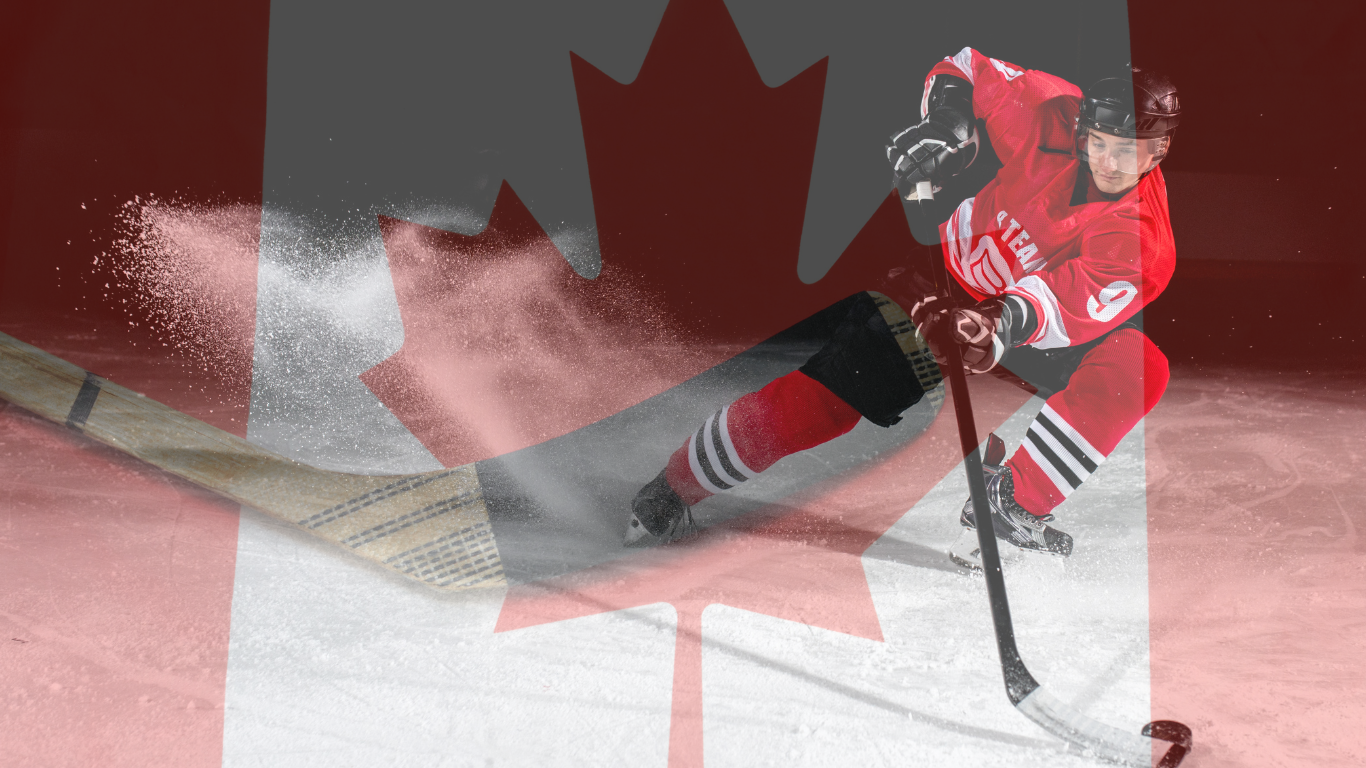In hockey, the player’s stats in the plus-minus section indicate whether or not a player was on the ice at the time of a goal. If you are on the ice and someone scores a goal, you get a plus; if you are on the ice and the opposing team scores, you get a minus.
Plus-minus has been used for decades in hockey games to help determine the player’s skills. If you want to know more about plus-minus in hockey and how it works, continue to read this article.
What is Plus Minus in a Hockey Players Stats?

It is important to first point out that plus and minus stats in hockey have nothing to do with points scored, assists, or plays. A plus minus simply lays out how many points were scored for or against a player’s team while they were on the ice.
This scoring system is a good way to assess a player’s skills and performance even when they are not getting the same amount of ice time or play in positions that aren’t necessarily designed to score goals or stop them.
For example, the 3rd and 4th lines are forward players who are put on the ice to play more of a defensive style of offense, wearing out the opposing team’s players and are not in it to score many goals.
There are benefits and drawbacks of this system, like many other scoring systems out there, and the benefits of it really depend on what it is you are looking for.
Is Plus Minus in Hockey Beneficial?
Whether a plus minus stat system is beneficial to players, coaches, and teams is an argument for many. These days there is a widespread opinion that plus-minus is confusing, doesn’t give credit where credit is due, and should be a thing of the past.
Disadvantages of the Plus Minus Stat System
There are a lot of reasons those in the hockey community feel the plus minus system is no longer a positive way to rate a player’s performance and feel it shouldn’t be used to rank players.
Based on Team Performance
No matter the sport, a player’s performance is going to be heavily impacted by the way the rest of the team plays. In a scenario where the defense isn’t holding their own and pucks are making it past the goalie, the forwards are taking the hit on their stats.
Is it fair that a line change occurs right as a player is coming onto the ice and the other team scores? That is a minus on his stats, but he wasn’t even part of the play.
Doesn’t Look at a Player’s Individual Performance
This example can go either way. If a team member is playing his best game ever and the rest of the team is failing, that player will not get recognized for his performance.
On the other hand, if a player isn’t doing much for the team, but the team is playing extremely well, that player’s stats are going to be high on the plus side, giving him a better score than he deserved.
These stats can do a player more harm than good by covering up skilled individuals because of bad team performance.
Not all Goals are Factored into Plus Minus Stats
The plus minus stats do not count all goals into their numbers. These stats do not count powerplays or short-handed goals. While the reasoning behind it makes sense, it still doesn’t seem to create a fair overall player performance stat.
Poor Goalie Performance
Let’s look at the game from an entirely different perspective. What if the whole team is playing very well, but the goalie isn’t doing a good job protecting the goal and is letting easy shots get by him? This is going to alter the stats for everyone.
What are the Benefits of Plus Minus Stats?
Although there is quite a long list of disadvantages to using the plus minus stat system, it also has its upside.
Gives Teams Credit As A Whole
Yes, it is important to identify individual players with impressive skills, but it is also crucial to determine which players can successfully be part of a team and win as part of a team. One sole player isn’t going to do all of the work, so sometimes it is good not to give them all of the credit.
All Players Get Recognized for Their Work
On the flip side, some players do not get the same opportunities to score goals or defend against them, such as the 3rd and 4th line (as mentioned above.) Using the plus minus stats is an excellent way to show when a player was involved in a play that positively impacted the team.
Shows the Impact of a Player While on the Ice
Plus, minus stats are a quick and easy way to see how helpful a player can be to the team while they are on the ice. These stats are easy to look at and compare from game to game, giving coaches, teams, and fans a great indication of who is carrying the team and who may be hurting it.
Where Did the Plus Minus Stats Come From?
The NHL started utilizing the plus minus stat system in the 1967-68 season for all teams. However, it was first used by the Montreal Canadians sometime in the 1950s. Once it was integrated into the sport, one player would receive an NHL plus or minus award each year.
This stat system was put into use to make it faster and easier to determine a player’s skills and chances of helping the team score a goal while on the ice, not just seeing who the player scoring is.
This was a way to look at the performance of the team as a whole and how each player contributed.
What is a Good Plus Minus Stat?
The plus minus stat concept is pretty easy to understand, which is why it was implemented in the first place. Simply put, if you have a plus in front of your number, you have a good plus minus score. If you have a negative sign in front of your number, you have a bad plus minus score.
How Do You Calculate a Plus Minus Stat for an Individual Player?
Calculating a plus minus score for a player is relatively simple and just requires a little basic math.
First, count up a players plus minus points for each game.
- A player gets one plus for any strength or shorthanded goal made while they are on the ice.
- A player gets one minus for any goal scored on their team while on the ice.
- No plus or minus is given if a goal is scored during a power play.
- A plus or minus is given during an open-net score unless it is on a powerplay.
Once the scores are determined for individual games, you can then add or subtract that game’s stats from the rest of the game in the season for the player.
Plus Minus FAQs
While determining the plus minus stats in hockey may be easy when it comes to numbers or scores, there are some details that people can become confused by. Here are a few plus minus Frequently asked questions, not everyone knows the answers to.
What Goals are Counted in Plus Minus Stats?
The goals used to determine plus minus stats are even-strength or shorthanded goals.
What Are the Exceptions in Plus Minus Stats?
The exceptions to plus minus stats are goals that are scored during a powerplay or made during penalty shots.
What is a Good Plus Minus Stat?
A good plus minus stat is a high plus number. The higher the number not only indicates you were on the ice for a lot of goals scored, but it shows you were on the ice a lot; this is a good indication you are a talented player.
All Time Records (Plus Minus Stats)
| Player | Plus Minus Stat |
|---|---|
| Larry Robinson | 722 |
| Bobby Orr | 582 |
| Ray Bourg | 527 |
| Wayne Gretsky | 520 |
| Bobby Clarke | 527 |
| Sergay Savard | 462 |
| Dennis Potvin | 456 |
| Nicklas Lidstrom | 450 |
| Bryan Trottier | 449 |
| Brad McCrimmon | 448 |
Is Plus Minus a Good Way to Evaluate a Players Skills and Performance?
The plus minus stat system is good for a quick overview of a team’s performance and how well a player is doing within that team. However, it does lack in showcasing the strengths of individual players.
You will always notice that top-notch teams players always have higher plus-minus stats, while the poor performing teams players have very low stats. This is even when an extremely skilled player is on the ice.
Summing Things Up
In short, the plus minus stat is an old fashion way to determine a player’s performance by grading them based on how many points were scored while they were on the ice and how many points were scored against their team while they were on the ice.
Whether you are a fan of the plus minus system or feel it is flawed, it is still used today and can give you some insight into how each player performs during playtime in each game.



